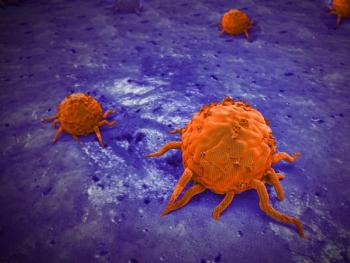
AI-Based Score May Detect Missed Cancers After Negative Mammography
In terms of cancer detected per 1000 MRI exams, the AI scoring method was close to 4 times more efficient vs traditional breast density measures.
Investigators conducting the ScreenTrustMRI trial (NCT04832594) found that using an artificial intelligence (AI)-based score for supplemental MRIs may detect missed breast cancer following negative mammography, according to results published in Nature Medicine.
Findings from the trial showed that in cancer detected per 1000 MRI exams, the AI scoring method was approximately 4 times more efficient vs traditional breast density measures used in the DENSE trial (NCT01315015; 64.4; 95% CI, 46.8-88.1; vs 16.5). Additionally, among patients undergoing MRI and biopsies (PPV1, PPV3), as assessed by Breast Imaging-Reporting Data System (BI-RADS) 3-5, the proportion of cancers identified were 37.9% (95% CI, 28.6%-48.1%) and 50.7% (95% CI, 39.0-62.3), respectively.
The ScreenTrustMRI trial source screening population consisted of 59,354 individuals who underwent AISmartDensity mammogram screening; those with scores deemed “very high” (n = 4103, 6.9%) were eligible for trial participation. Of those who were eligible, an invitation error excluded 282 eligible patients, bringing the invited population down to 3821.
Of those who accepted the invitation (n = 1315), 559 completed the MRI examination to be included in the final cohort analysis. Patients were enrolled between April 1, 2021, and April 7, 2023.
MRI images were compiled by a GE Signa Premier 3 T MRI scanner, with a total scan time of 12 minutes. The protocol included use of a localizer, a 2D Axial Fast Spin-Echo T2-weighted Dixon imaging sequence, and a T1-weighted dynamic contrast-enhanced Dixon sequence, with desired times achieved through view-sharing. After contrast injection, 7 timeframes were acquired at 0:00, 0:33, 1:04, 1:37, 3:00, 4:30, and 6:00 minutes contained within the dynamic contrast-enhanced sequence.
The primary end point was biopsy-verified breast cancer detected by MRI after a negative mammography. Secondary end points included follow-up pathological assessments for the diagnostic biopsy and surgical specimen, including assessment of total cancer number with adverse prognostic characteristics, and radiologist interpretations of the MRI examinations with subsequent diagnostic work-up.
Each MRI examination was read non-blinded by 2 breast radiologists with 4 and 5 years of MRI reading experience, respectively. Fibroglandular proportion, corresponding to mammographic density, was assessed for each examination, as well as background parenchymal enhancement. To assess the degree of malignancy suspicion of imaging, lesions were classified through BI-RADS. A large percentage were classified as benign (83%), denoted as BI-RADS 1-2; 54 (9.7%), 27 (4.8%), and 14 (2.5%) were classified as probably benign, suspicious for malignancy, or highly suggestive of malignancy, respectively, denoted by BI-RADS 3, 4, and 5.
Of those with ‘probably benign’ classification (BI-RADS 3), the proportion of cancers identified were 13.0% (95% CI, 6.2%-25.1%) with PPV1 and 22.6% (95% CI, 10.8%-41.2%) with PPV3. For patients with ‘suspicious for malignancy’ classification (BI-RADS 4), the proportion of cancers identified were 63.0% (95% CI, 42.8%-79.4%) with PPV1 and 65.4% (95% CI, 44.7%-81.5%) with PPV3. Furthermore, the proportion of cancers identified for those with ‘highly suggestive of malignancy’ classification (BI-RADS 5) was 85.7% (95% CI, 53.5%-96.9%) with both PPV1 and PPV3.
“In conclusion, using an approach of analyzing mammograms with AI as a selection method for supplemental MRI is around four times more efficient, in terms of cancer detection, than second-best approaches based on traditional density measures and risk models. Subsequent follow-up research will determine primary outcomes of the effect on prognostically important cancer characteristics,” concluded Mattie Salim, MD, PhD radiologist resident in the Department of Oncology-Pathology at Karolinska University Hospital, with study coinvestigators.
Reference
Salim M, Liu Y, Sorkhei M, AI-based selection of individuals for supplemental MRI in population-based breast cancer screening: the randomized ScreenTrustMRI trial. Nat Med. Published online July 8, 2024 before print. doi:10.1038/s41591-024-03093-5
Newsletter
Stay up to date on recent advances in the multidisciplinary approach to cancer.


















































































